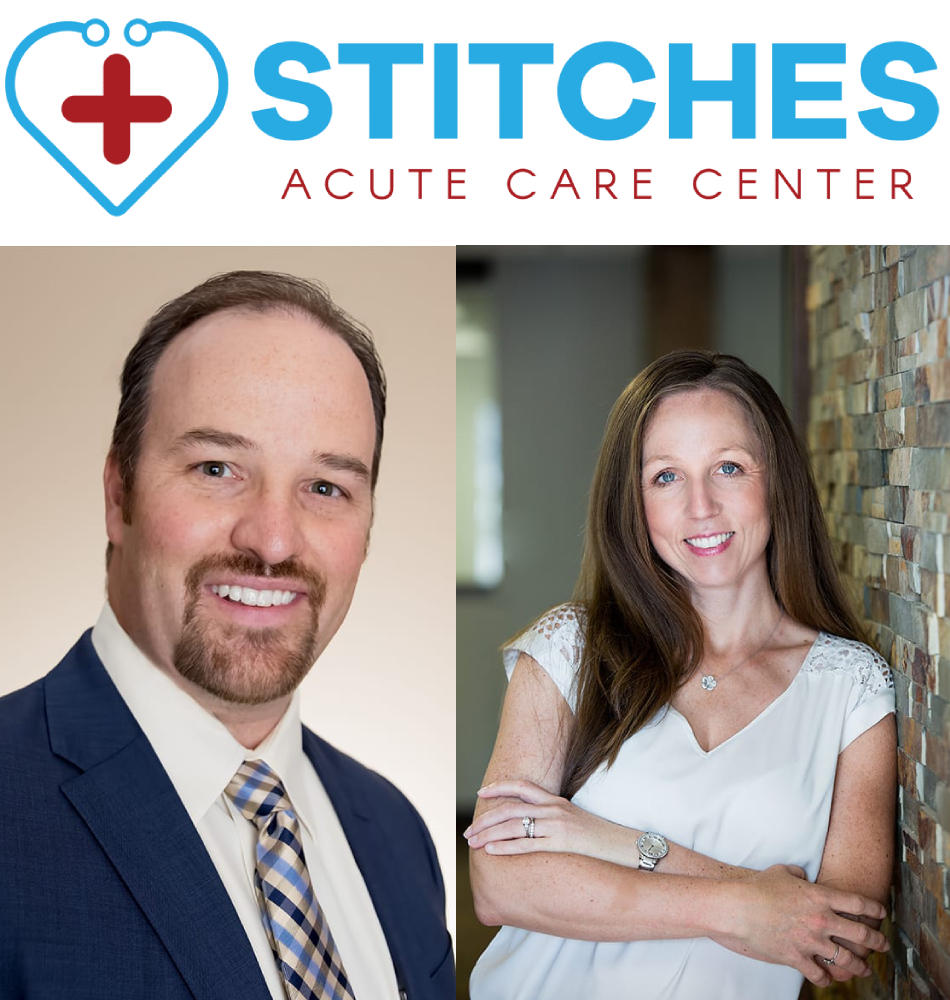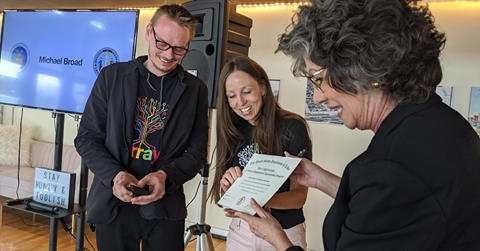Owners Transform Clinic Into Hub For COVID-19 ResponseBy COOPER MCKIM • MAR 20, 2020
On March 12, Amy Surdam and her husband Dr. Dan Surdam waged war on COVID-19. The two Wyoming residents own Stitches Acute Care - a clinic in Laramie, Cheyenne and Wellington, Colorado. The clinics have transformed into a testing and treatment center for the global pandemic at a local level as well as an information hub for the whole state. Amy and Dan Surdam tell the story of how their world has changed in just a week.
Amy Surdam: The view of our patient population, I think has definitely changed. I think a week and a half ago, we viewed our patients as the people who sought care from us at Stitches and now we very much view our patients as the entire population of our communities that we serve and are really just trying to protect as many people as we can.
Cooper McKim: One of the biggest things that I hear is that testing has been hard to come by that, that the state and most states are underprepared when it comes to ventilators, and just beds available. Have there been those challenges? And have they improved?
Dr. Dan Surdam: So, yes, those challenges are all the realities that we're facing, I think when this first started to come our way, so to speak, there was announcement made that the federal government said the government's going to make a million tests available. And to the layperson, well, that sounds like a lot. But when you try to distribute that throughout the country, that really doesn't go very far. Our biggest frustration up to today, still, that we can't test people who we want to test because when people are scared, and they don't feel well, you know, they want to know if they have the virus or not. And we can we have very limited tests, so we have to be... we felt we're following the CDC guidelines in terms of who gets a test and who doesn't get a test... but those are changing very quickly.
And so we've we've had to be very kind of prudent in terms of who we're testing, who we're not testing. Initially Wyoming was allocated zero tests when this all began in California received 200 tests. So, it gives you an idea of kind of the woefully inadequate initial response. And now we're chasing our tails, so to speak. But we are ramping up. Private laboratories are kind of ramping up their ability to test for this virus. And so, we're seeing more more tests, kits available coming our way. It may take two weeks, before we're able to really kind of test everybody that needs to be tested.
And in terms of protective equipment there's a huge shortage. People initially were hoarding supplies and people were actually stealing supplies. And so the people on the front lines that needed the supplies that that we just simply don't have them. So, we're doing everything we can. We've gone to Home Depot to buy masks that will protect our employees and our patients.
CM: What do you want ideally, from the state of federal government right now, and maybe what would you have wanted from the beginning?
DS: You know, I think that that's a great question. And I think once we come out the other side we'll have maybe a better answer. I think, you know, if anything, we needed more transparency and the state and federal government really aren't... they're not set up to deal with a pandemic like this.
"The people on the frontlines, you know, a lot of times are not communicated with in terms with the state and federal agencies."We have the technology and the capability to quickly test people and to get those results out into the community and let our citizens know how widespread the diseases. But the fact is, we weren't able to test in a timely manner. The people on the frontlines, you know, a lot of times are not communicated with in terms with the state and federal agencies. I'll give you an example: there's counties that have a stockpile of certain supplies, but can't be released because they're controlled by the federal government, and these local agencies have not been given In the green light by the federal government to release the suppressed supplies to EMS responders and frontline workers.
I think when the dust settles, we will have learned a lot, and in the future will be better prepared for novel viruses like this that, at this point, we don't have any immunity against.
CM: A lot has changed in the past week. Do you feel like the community is ready to help handle what's going on in that we're in a better position now?
AS: Yes. When we decided to take definitive action last Wednesday, so a week ago, it was very unnerving even internally to say, "We have to make a decision right now, are we, are we going to separate sick from well? Are we going to do this like, right, from lessons learned from other countries and and go forward with this or not?" And so we implemented on Thursday, six days ago, we segregated sick from well and we initiated car testing and really pushed people to utilize telemedicine and those first few patients, that first morning, when we were going out to the cars in our PPE and swabbing and screening... there was a lot of hesitancy and a lot of looks from drivers-by... and I think we were all like, is this really happening? Is this really what we're supposed to be doing? And there were some people questioning the necessity of it and... but I think, in the short six days that have passed, people are accepting of this and grateful that there's a separation and we're limiting as much exposure as possible for our staff and community members and patients
"I think there are still some people who are at Walmart or getting together with others in a social setting, and that's just not safe for a lot of people in our community."CM: What are the big remaining issues to tackle for you guys going forward?
AS: Our immediate issues are supplies, protective equipment, N95 masks and also enough swabs that we can truly test, you know, every every one or the people who need tested right now... we have to be very picky about who we test. The results that we have received, the patients have that have been positive, have had fairly mild symptoms in that they did not need hospitalization or anything like that. So, I think this is much more prevalent than then we are aware of just because we have had such limited testing. So those are our immediate concerns.
I think the other immediate concern we have is for people to take this seriously. It's not a game. It's not an exercise. This is real time, this is happening. This is here and we have to protect our community members, I think there are still some people who are at Walmart or getting together with others in a social setting, and that's just not safe for a lot of people in our community. And so we would hope that people would take this very seriously, and everyone would social distance and self isolate as quickly as they possibly can.
Have a question about this story? Contact the reporter, Cooper McKim, at [email protected] .






